
 |
 |
20000 photos of India, 1280õ960
Sree Krishna temple, Guruvayoor (Guruvayur) – photo gallery
|
There is a description of the Guruvayoor (Guruvayur) temple in the eminent poem ‘Kokasandesam’, a poem in the form of a message to the beloved in which the name of place is mentioned as ‘Kuruvayoor’ and not Guruvayoor or Gurupavanapura. The idol of the temple belongs to Lord Vishnu. But today the temple is known as Sree Krishna temple. Neverthless, Sree Krishna is actually the incarnation of Maha Vishnu. Sree Krishna is the son of Vasudeva and Devaki. They worshipped an idol of Maha Vishnu. After the demise of his parents Sree Krishna brought it to Dwaraka and worshipped it as his parents did, because it was so good an idol that brought about prosperity and good luck to his family. When the ‘Yadava’ dynasty to which Lord Krishna belonged, gradually met with extinction, Sree Krishna prepared himself to enter into eternity (the heavenly kingdom). Now it was time for the next incarnation. So Sree Krishna settled his presence and power in the Vishnu idol so that it got the image of Sree Krishna. After having done all the arrangements for the installation of the image, Sree Krishna entered the Heavenly Home, and the entire place Dwaraka sank deep into the sea. Later, the idol had been retrieved by the teacher of Gods Brahaspathi (Deva Guru) and Vayu (God of air) and installed it in the place as we see it today. As it was placed by "Guru" and "Vayu", the place was known as Guruvayoor and the deity was known as Guruvayoorappan. Today people look upon this deity as a Saviour of mankind from the ruptures of ‘Kaliyuga’. Once Sree Sankaracharya Swamy was speeding through the air by his divine power, he showed reluctance to stop at Guruvayoor and bow before the deity. The Lord, being furious, ceased the moving ability of the Swamy and fell him down on the ground. As a result of his fall, a gap was formed at the north western corner of the temple. This fissure is still maintained as it is, and when the procession of the deity passes by this corner, there will be a momentary stoppage of all musical instruments in order to commemorate the incident. Swamikal beg for Lord’s pardon and remained at the temple for a long period worshipping the deity and composing devotional songs. During his stay at the temple he systematised all the religious observances of the temple as well as the usual rites connected with the formal worship. Guruvayoorappan was so pleased with the Swamy that He showered on him His blessings and absolved him from all sins. On the day of ‘Pooyam’ star in the month of ‘Kumbam’ (March) there takes place the hoisting of the flag for the ten-day main festival of the temple. The temple premises are decorated with colour bulbs and flags. The rhythmic playing of the musical instruments, procession of a large number of elephants, variety entertainments are a few of the attractions of the festival. Elephant-race is an important item of the festival. The elephant which comes out first in the race, gets the privilege of carrying the Lord’s replica during the ritualistic procession. The mythical story behind this elephant-race goes like this. It was a time when the rivalry between the Zamorin of Kozhikode and Rajah of Cochin was at its zenith. So elephants were not sent to Guruvayoor festival from Thrikkannamathilakom as against the prevailing custom of the previous years. But Guruvayoorappan, the Almighty, brought the elephants to Guruvayoor by his divine power, and the elephants participated at the festival. It is said that this incident is commemorated by the elephant race which has still been conducting at the temple every year. Guruvayoor ‘Ekadasi’ is another important festival celebrated at the temple in the month of ‘Vrichikom’ (November / December). It is an auspecious day for the Hindus because it was on this day that Sri Krishna imparted Geetha, the ethical treatise to Arjuna. The observance of ‘Ekadasi’ is an important item of ritual followed by the devotees for the fulfilment of their hopes and aspirations. Guruvayoorappan's favourite form of art is 'Krishnanattam', an ancient dance-drama. As a devotional offering to the Lord, devotees arrange for the performance of this art form in the premises of the temple. Kozhikode Manavedan Nampoothiri is the creator of Krishnanattom. What prompted Nampoothiri for the composition is related to the story of a peacock feather. According to the legend, Nampoothiri, with the help of Vilwamangalathu Swamiyar, was able to see Lord Krishna directly in front of him. Hardly had he seen the Lord when he ran towards him to embrace Him, but the Lord disappeared at once leaving a peacock feather. Nampoothiri took the fallen feather and made use of it on the crown that he designed for performing the dance-drama. Meipathur Bhattathiri, the author of Sreemath Narayaneeyam; Poonthanam, the composer of Jyanapana; Kururamma, who got the good luck to fondle Unnikrishna; and Vilwamangalathu Swamiyar, who was an ardent devotee, had all gained the rare opportunity to see the Lord Krishna in person. The story related to Nenmeni Unni from whom Sree Krishna received pickled salt mango and buttermilk, and the little Warrasyar girl to whom He offered a garland are other hair-raising auspicious occasions. There is a resting centre for the temple elephants at Punnathur fort, about 3 kms north of Guruvayoor temple. Guruvayoorappan has a fancy for elephants. So people offer elephants to the deity and they are kept at the above mentioned elephant centre. Mahouts have been employed to look after them. Now there are more than 50 elephants under the Guruvayoor Devaswom. The administration of the temple is being carried out by a board known as Guruvayoor Devaswom Board. The following is a list of other temples that come under the Guruvayoor Devaswom. |
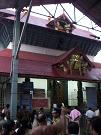
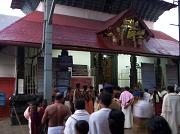
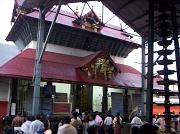
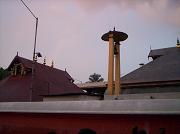
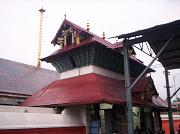
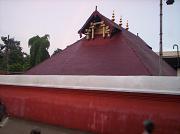
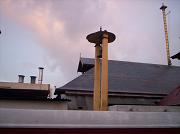
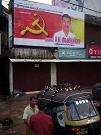 |
|
|